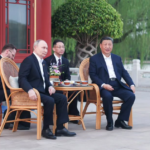SEVENTY one years after Independence, India hasn’t solved any critical social issues. Violent and aggressive caste divisions persist, and openly lift their ugly heads during the various elections. Disruptive gender biases continue, as women empowerment is restricted to a few sections and female infants are still being killed. Inclusive India is only a mere slogan today, just like Garibi Hatao was in the 1970s. Although poverty levels have reduced, there are still hundreds of millions, who are poor, starved, homeless, and destitute. On top of all this, we have decisively divided India into socio-economic classes.
Several years ago, Kishore Biyani of the Future Group, as also the father of modern retail in India, divided India into three distinct socio-economic classes. India 1 was elitist, and wealthy with sizeable disposable incomes. India 2 served India 1, as maids and drivers, was largely laden with high hopes and grand ambitions. India 3 was poor, barely able to make their ends meet, but a bit optimistic about the future of their children. India 1 made the right noises, but didn’t wish India 2 to graduate upwards, as the former needed the latter. India 1 and 2 publicly talked about the poor, but did little to help them. What Biyani described in terms of consumption attitudes has turned into a menacing reality. The social and economic divisions between these three classes have become sharper, deeper, and wider. In terms of incomes, the gap is yawning. A recent survey found that the richest 1 per cent Indians own 73 per cent of the total wealth, up from 58 per cent in 2017. The bottom 50 per cent of Indians, mainly the poor and lower classes, saw their incomes inch up by a mere 1 per cent. This is a complete travesty in the world’s largest democracy.
Swathes of Indians are still hugely dependent on government doles. Direct Benefit Transfer has reduced corruption, but made benefits more inaccessible to illiterate and semi-literate villagers, who are officially dubbed as ‘financially inclusive’ because they have bank accounts, but have no clue what it means and how to operate their accounts. The government’s inability to create necessary jobs implies that the poor will continue to remain poor, may even become poorer, even as the rich become richer. A country on permanent dole is a country on permanent boil.
The fact remains that despite greater connectivity in all forms, there is a yawning disconnect between the political and bureaucratic rulers and masses. The latter rarely get to meet and interact with the former, except during election times. Even then, you get to hear the Prime Minister on Facebook, Twitter, WhatsApp, radio, TV, and other online apps. Never in person! This is the unfortunate part of the idea of new India. The problem becomes more acute when the majority of population realises that it cannot access the three crucial ingredients to ensure future prosperity, economic ambitions, and social status. These are the three H’s of modern life – housing, health, and higher education.Despite government interventions, despite massive housing schemes, mass-linked health insurance, and hefty quotas in higher education, the three elude most Indians. In fact, partial and selective access has led to further disparities – between castes and communities, and within castes and communities. The distinctions between the haves and have-nots are more distinct and acute.
In 2022, India will become the world’s most populated nation, overtaking China. Hundreds of millions of people will find themselves without jobs, without adequate education, and with little health benefits. The State, or the political rulers, who are more inclined to woo voters to win elections, rather than create a workable vision to improve their lives forever, will find that clashes between religions, communities, castes, and classes will become open and rampant. It’s time for decisive action now. Seventy five years after Independence, we may witness yet another brutal partition that can cleave and rent asunder India’s social fabric.
ANIL TYAGI
editor@gfilesindia.com
Editor, gfiles




























































